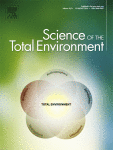View Item
- xmlui.general.dspace_homeCentros Regionales y EEAsCentro Regional La Pampa - San LuisEEA AnguilArtículos científicosxmlui.ArtifactBrowser.ItemViewer.trail
- DSpace Home
- Centros Regionales y EEAs
- Centro Regional La Pampa - San Luis
- EEA Anguil
- Artículos científicos
- View Item
Effect of different cover crops on C and N cycling in sorghum NT systems
Abstract
In many no-till (NT) systems, residue input is low and fallow periods excessive, for which reasons soil degradation occurs. Cover crops could improve organic matter, biological activity, and soil structure. In order to study changes in soil carbon, nitrogen and microbial biomass a field experiment (2010 − 2012) was set up with sorghum (Sorghum bicolor Moench.) monoculture and with cover crops. Treatments were control (NT with bare fallow), rye (Secale
[ver mas...]
In many no-till (NT) systems, residue input is low and fallow periods excessive, for which reasons soil degradation occurs. Cover crops could improve organic matter, biological activity, and soil structure. In order to study changes in soil carbon, nitrogen and microbial biomass a field experiment (2010 − 2012) was set up with sorghum (Sorghum bicolor Moench.) monoculture and with cover crops. Treatments were control (NT with bare fallow), rye (Secale cereale L.) (R), rye with nitrogen fertilization (R + N), vetch (Vicia villosa Roth.) (V), and rye-vetch mixture (VR) cover crops. A completely randomized block design with 4 replicates was used. Soil was sampled once a year at 0.06 and 0.12 m depth for total C, microbial biomass carbon (MBC) and-nitrogen (MBN) determinations. Shoot and root biomass of sorghum and cover crops, litter biomass, and their respective carbon and nitrogen contents were determined. Soil temperatures at 0.06 and 0.12 m depth, volumetric water contents and nitrate concentrations were determined at sowing, and harvest of each crop, and during sorghum's vegetative phase. NT led to a small increase in MBC and MBN, despite low litter and root biomass residue. Cover crops increased litter, root biomass, total C, MBC, and MBN. Relationships between MBC, MBN, and root-C and –N adjusted to logistic models (R2 = 0.61 and 0.43 for C and N respectively). Litter cover improved soil moisture to 45–50% water filled pore space and soil temperatures not exceeding 25 °C during the warmest month. Microbial biomass stabilized at 20.1 g C m− 2 and 1.9 g N m− 2 in the upper 0.06 m. Soil litter disappearance was a good indicator of mineral N availability. These findings support the view that cover crops, specifically legumes in NT systems can increase soil ecosystem services related to water and carbon storage, habitat for biodiversity, and nutrient availability.
[Cerrar]

Author
Frasier, Ileana;
Quiroga, Alberto Raul;
Noellemeyer, Elke;
Fuente
Science of the total environment 562 : 628-639. (August 2016)
Date
2016
ISSN
0048-9697
Formato
pdf
Tipo de documento
article
Palabras Claves
Derechos de acceso
Restringido
 Excepto donde se diga explicitamente, este item se publica bajo la siguiente descripción: Creative Commons Attribution-NonCommercial-ShareAlike 2.5 Unported (CC BY-NC-SA 2.5)
Excepto donde se diga explicitamente, este item se publica bajo la siguiente descripción: Creative Commons Attribution-NonCommercial-ShareAlike 2.5 Unported (CC BY-NC-SA 2.5)

